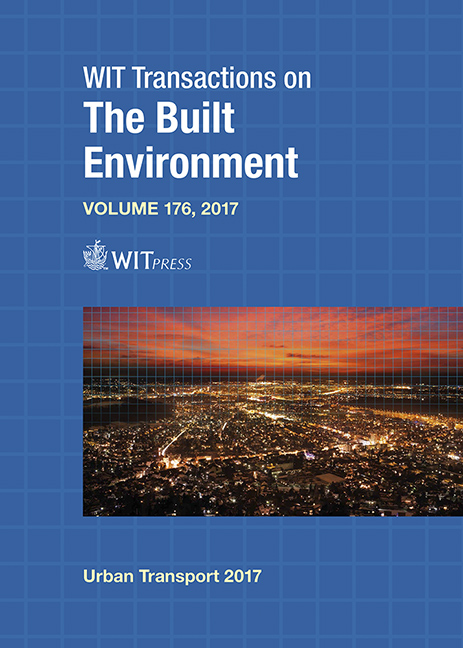SEGMENTING FARE EVADER GROUPS BY FACTOR AND CLUSTER ANALYSIS
Price
Free (open access)
Transaction
Volume
176
Pages
13
Page Range
503 - 515
Published
2017
Size
460 kb
Paper DOI
10.2495/UT170431
Copyright
WIT Press
Author(s)
SARA SALIS, BENEDETTO BARABINO, BRUNO USELI
Abstract
In proof-of-payment transit systems, fare evasion represents a crucial topic and undermines financial viability for public transport companies (PTCs). Two studies segmented all transit passengers by using qualitative research and explorative two-step cluster analysis as well as web-survey data. However, as far as the authors know, no study segmented exclusively the fare evader passengers, with the aim to know deeply characteristics of distinct groups, and to use data gathered from an intercept survey. Moreover, the combined use of a factorial and a cluster analysis was not adopted to solve this issue. By using 850 on-board personal interviews, gathered from an Italian PTC, a Multiple Correspondence Analysis and a Hierarchical Cluster Analysis have been performed to group the fare evader passengers. Three clusters of evaders’ passengers are derived: 1) the chronic, 2) the calculated-risk and 3) the accidental fare evader. The chronic cluster includes passengers who always evade the fare, and represents a medium numerous groups of fare evaders. The calculated-risk cluster includes passengers who usually evade the fare and represents the most numerous group of evaders. The accidental cluster includes passengers who rarely evades the fare and represents the less numerous groups. These outcomes are very relevant and useful for both research and practice. Indeed, this paper contributes to the empirical understanding of the determinants of being a fare evader for a selected group. Moreover, it helps PTCs understand how evaders’ groups differ each other, adopt suitable strategies for each group and evaluate their effects.
Keywords
fare evasion, fare evader characteristics, proof-of-payment, multiple correspondence analysis, cluster analysis, fare evaders groups





